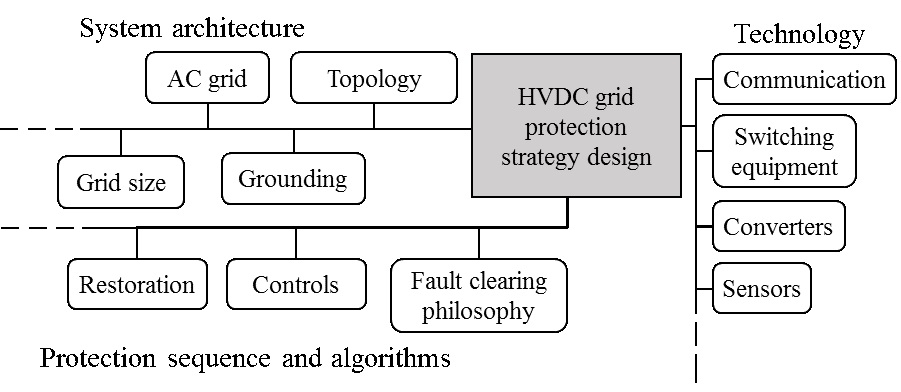Assessment of protection strategy options
for future DC grids

Abstract
Within the 2030 climate and energy framework, the European Union (EU) has defined key targets for the reduction of greenhouse gas emission with at least 40 %, create 32 % share for renewable energy and have a 32.5 % improvement in energy efficiency compared to 1990. Regarding electricity interconnection, the EU fixed a goal of 15 % to be achieved by 2030. HVDC grids are a possible mean to reach these objectives. HVDC systems are considered to be a cost-effective way to transmit electric power and, in particular, to connect remote off-shore wind farms, to interconnect AC asynchronous grids and to reinforce AC power transmission. One of the key elements to successfully implement a HVDC grid is the development of DC grid protection. A large amount of work has been carried out in recent years to enhance the technical readiness of DC breakers as well as for DC protection strategies. Hybrid and mechanical DC breaker prototypes have been tested at the KEMA laboratories of DNV GL and a 500 kV industrialized hybrid DC breaker is near to be in operation in the Zhangbei HVDC grid. With regard to protection strategies, several fault clearing philosophies have been proposed, such as the fully-selective, non-selective and partially selective fault clearing strategies. In the frame of European H2020 PROMOTioN project four protection strategies have been developed in detail; two fully-selective strategies employing hybrid DC breakers or mechanical DC breakers in series with fault current limiters and two non-selective strategies employing full-bridge Modular Multi-level Converter (MMC) or mechanical breakers connected between the converter and the DC busbar. Prior step towards the selection of a protection philosophy most suitable to a specific HVDC system is the evaluation of protection strategy performances. For this purpose, this paper proposes a set of measurable Key Performance Indicators (KPI) that demonstrates how effective each protection strategy is achieving key objectives. Three categories of KPI are identified: effectiveness, failure and cost indicators. A Multi-Terminal high voltage Direct Current (MTDC) grid test benchmark is considered to illustrate the methodology for protection strategy evaluation and comparison for the protection strategies proposed within the PROMOTioN project.
A. BERTINATO, G. DANTAS DE FREITAS, S. POULLAIN, B. ISMAIL, O. DESPOUYS, P. RUFFING, VAN HERTEM
Keywords
HVDC Grid – Protection – DC Circuit Breaker – Key Performance Indicators
Presented at Cigre e-session 2020


